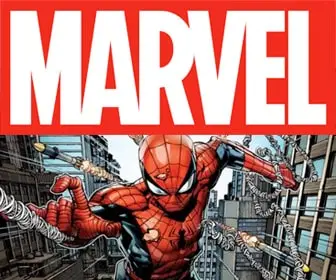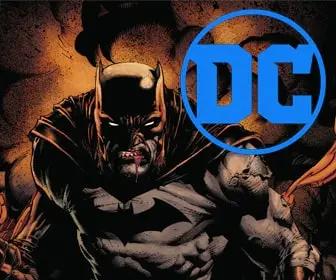
Jack Kirby’s Pantheon: Gods at War
Jack Kirby: King Beyond the Stars
The name Jack Kirby is synonymous with comic book greatness. From co-creating Captain America with Joe Simon to revolutionizing the Fantastic Four with Stan Lee, Kirby’s artistic vision and boundless imagination left an indelible mark on Marvel Comics. Yet, in 1970, the “King” made a bold move, venturing to DC Comics with a project unlike any other: The Fourth World.
This wasn’t just a single comic series, but an ambitious saga unfolding across multiple titles. It was a sprawling space opera encompassing gods, heroes, and cosmic entities locked in an eternal struggle. The Fourth World stands as Kirby’s magnum opus, a testament to his boundless creativity and a unique chapter in DC Comics history.
A Canvas of Cosmic Creation: Unveiling the Fourth World
Kirby’s Fourth World wasn’t a self-contained story, but a meticulously crafted tapestry woven across several DC titles. Flagship titles like “New Gods” and “Mister Miracle” served as the foundation, introducing readers to the grand conflict. “Forever People” delved into the lives of young warriors trained by New Genesis, while other series like “Superman’s Pal Jimmy Olsen” occasionally intertwined with the larger narrative.
This interconnectedness established a vast and complex cosmos. At its heart lay two warring planets: New Genesis, a utopian paradise ruled by the benevolent Highfather, and Apokolips, a dystopian nightmare under the iron fist of the tyrannical Darkseid. These planets weren’t mere celestial bodies; they were living, breathing entities embodying the eternal struggle between good and evil.
Gods and Mortals: A Pantheon of Power and Rebellion
The Fourth World wasn’t just about celestial landscapes; it was a stage teeming with unforgettable characters. At the forefront stood the two cosmic rulers: Highfather, the wise and benevolent leader of New Genesis, and Darkseid, the embodiment of tyranny who lusted for ultimate power through the elusive Anti-Life Equation, a formula that could enslave all living beings.
Caught between these two titans was Orion, a powerful warrior raised by Highfather but harboring the genetic heritage of Darkseid, creating a constant internal conflict. Meanwhile, on New Genesis resided Mister Miracle, a charismatic New God with a surprising secret: he was married to Big Barda, a mighty warrior from Apokolips who had defected for love. Together, this unique couple, skilled in escape artistry and superhuman combat respectively, became champions for freedom.
Adding another layer to the narrative were the Forever People, a group of young heroes from different planets brought to New Genesis and trained to defend the utopian ideals it represented. These diverse individuals, each with unique powers, stood as a beacon of hope against the encroaching darkness of Apokolips. The inclusion of both god-like beings and relatable heroes grounded the epic narrative, allowing readers to connect with the characters’ struggles and triumphs.
Beyond Black and White: Exploring the Moral Tapestry of the Fourth World
Jack Kirby’s Fourth World wasn’t a simplistic good versus evil story. Sure, Darkseid’s tyrannical rule and his desire for the Anti-Life Equation placed him firmly in the villain camp. However, Kirby masterfully wove in complex themes that challenged readers to see beyond the surface.
The conflict between New Genesis and Apokolips represented a clash of ideologies. New Genesis championed freedom, knowledge, and the pursuit of a better tomorrow. Apokolips, on the other hand, embodied control, blind obedience, and a ruthlessness that sought to dominate all existence. This battle wasn’t just about the fate of two planets; it was a commentary on the very nature of free will and the seductive power of absolute control.
Further complicating the narrative was the character of Orion. His dual heritage as the son of Highfather and Darkseid forced him to confront the darkness within himself. He was a powerful warrior grappling with internal conflict, a constant reminder that the lines between good and evil can be blurred.
The Fourth World also explored the concept of hope and rebellion in the face of overwhelming odds. The Forever People, young and idealistic, represented the potential for positive change. Mister Miracle and Big Barda, defying societal norms and fighting for their love, embodied the idea that even against seemingly insurmountable power structures, individuals could make a difference.
A Legacy Forged in Ink: The Enduring Impact of the Fourth World
Jack Kirby’s Fourth World wasn’t just a fleeting moment in comic book history; it was a seismic event that left an indelible mark on the industry. The saga introduced a pantheon of characters who continue to resonate with readers today. Darkseid remains a central antagonist in the DC Universe, while Mister Miracle and Big Barda have garnered dedicated fan bases. The concepts and themes explored in the Fourth World have served as inspiration for countless creators, influencing future storylines and character creation.
But Kirby’s legacy extends beyond the narrative itself. His signature artistic style, characterized by bold lines, dynamic layouts, and larger-than-life characters, continues to influence comic artists. The Fourth World showcased Kirby’s mastery of visual storytelling, transporting readers to a universe both fantastical and thought-provoking.
In conclusion, Jack Kirby’s Fourth World stands as a testament to his boundless creativity and his unwavering commitment to pushing the boundaries of comic book storytelling. It’s a complex and compelling saga that continues to enthrall readers, a true masterpiece that has earned its place in the pantheon of comic book greats.
Collectors
- New Gods #1 (1971): This is the cornerstone of the entire saga, introducing readers to the warring planets of New Genesis and Apokolips, Highfather and Darkseid, and the grand conflict that unfolds. Kirby’s art shines in this first issue, setting the visual tone for the entire Fourth World.
- Mister Miracle #1 (1971): This debut issue throws you right into the action, showcasing Mister Miracle’s escape artistry and introducing his complex relationship with Big Barda. It delves deeper into the societal structure of Apokolips and the motivations of this unique hero.
- The Forever People #1 (1971): This first issue introduces the diverse group of young heroes who symbolize hope and rebellion. It explores the training they receive on New Genesis and their growing awareness of the looming war with Apokolips.
- Superman’s Pal Jimmy Olsen #135 (1970): This may seem like an odd choice, but it marks the very beginning of Kirby’s Fourth World concepts appearing in DC Comics. Jimmy Olsen gets transported to Apokolips, encountering characters and themes that would later be expanded upon in dedicated Fourth World titles.
- Jack Kirby’s Fourth World #1 (1991): This wasn’t part of Kirby’s original run but is a great starting point for newer readers. It’s a reprint series that collects key issues from the various Fourth World titles, offering a curated introduction to the saga.
Jack Kirby’s Fourth World: A Universe Beyond Compare
Jack Kirby’s Fourth World wasn’t just a comic book series; it was a sprawling space opera, a meticulously crafted tapestry woven across titles, and a testament to the boundless creativity of its creator. It introduced a complex cosmos brimming with unforgettable characters, explored profound themes that challenged traditional good versus evil narratives, and left an undeniable mark on the comic book industry.
The epic saga of New Genesis and Apokolips, the struggles of Orion, the defiance of Mister Miracle and Big Barda, and the unwavering hope of the Forever People continue to resonate with readers decades after their creation. Kirby’s artistic genius established a visual style that continues to inspire, while the themes explored in the Fourth World remain relevant, prompting readers to contemplate the nature of free will, the seductive power of control, and the unwavering human spirit in the face of adversity.
Jack Kirby’s Fourth World is more than just a comic book; it’s a captivating universe, a philosophical exploration, and a timeless achievement in comic book storytelling. It stands as a shining example of the limitless potential of the medium, a testament to the “King’s” legacy, and a reminder that even within the confines of panels and pages, universes can be built, ideas explored, and imaginations forever ignited.















